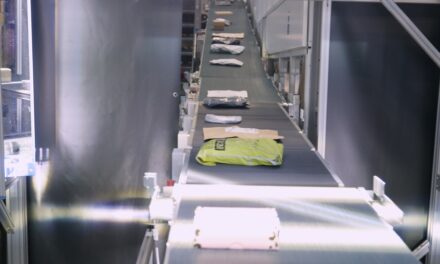
SPECIAL REPORT – FULFILMENT: Receiving end
The tenet that the customer is always right does not seem to have permeated the home delivery sphere, with many packages turning up at unspecified, inconvenient times. But with new entrants raising standards, the old school may be forced to mend its ways. By Ben Massey
Home shopping may be big business, but it is no longer the sole domain of big businesses, with everyone from Amazon to the local corner shop now offering an online or catalogue shopping experience. But while the rest of the retail world has been moving speedily towards home shopping solutions, it would seem that most delivery companies have been standing still.
Home shopping exists to cater for consumers who are too busy to visit the high street, so it should come as no surprise that they may not be able to wait at home all day to receive a package.
“UK carriers are going to have to face up to the fact that they’re no longer operating in an age where households are occupied all day to take deliveries,” says Theresa Barker, head of client retention at NCH Marketing Services. “Even people who don’t go out to work are too busy getting on with their lives to sit in and wait for them.”
According to Richard Roche, head of multichannel retail at Royal Mail, the postal operator is taking a number of measures to combat concerns about antisocial delivery times. “As well as offering a variety of delivery speeds, including guaranteed delivery by a certain time during the day, we have been at the forefront of developments to ensure convenience,” he says.
One such development is Local Collect, Royal Mail’s current solution to the problem of inflexible delivery options. Launched nearly four years ago, Local Collect enables most Post Office branches to hold undelivered packages, allowing the 93 per cent of people living within a mile of their local Post Office to collect the package at a time that suits them.
Roche adds: “Retailers can offer this as a point-of-order solution for customers who know they are not going to be home to receive the item.”
This service does not necessarily sound like the height of convenience; customers have to pick up the delivery for themselves, which is exactly what they wanted to avoid in the first place. And, while some people may be able to pick up packages after office hours at Post Offices linked to convenience stores or newsagents, many collections will have to wait until the weekend. If a package is particularly urgent, this will be unacceptable. There is also a 50p charge and a further day’s wait to have an item delivered from a head office to a local branch.
So it seems that, although Local Collect makes some effort to bring people and their packages together, it does not fully address the snags inherent to deliveries.
Other attempts at improvisation have been less successful. Stewart Oxley, sales director at Diss Promotional Services, says: “Having secure boxes built into the walls or garages of houses; sinking a secure ‘safe’ into people’s gardens; having parcels left at nearby convenience stores – these have all been tried with limited success.”
He adds: “The big problem is that you are trying to change people’s behaviour, and no one wants to amend their basic habits to the degree of having to call into the local BP garage on the way home to collect their parcels.”
The fact is, people expect deliveries to come to their homes. If occupants are not around during normal office hours, then carriers should look at changing their delivery times.
“Why can’t deliveries be made in the evenings?” asks Barker. “That’s when people are at home. Many other industries have adapted to 24-hour customer service – supermarkets, petrol stations, catalogue companies. Even banks offer late-night phone and Internet services – and they used to be notorious for their short hours of business.”
A number of companies relatively new to the home delivery arena are providing a far more efficient, convenient service t











